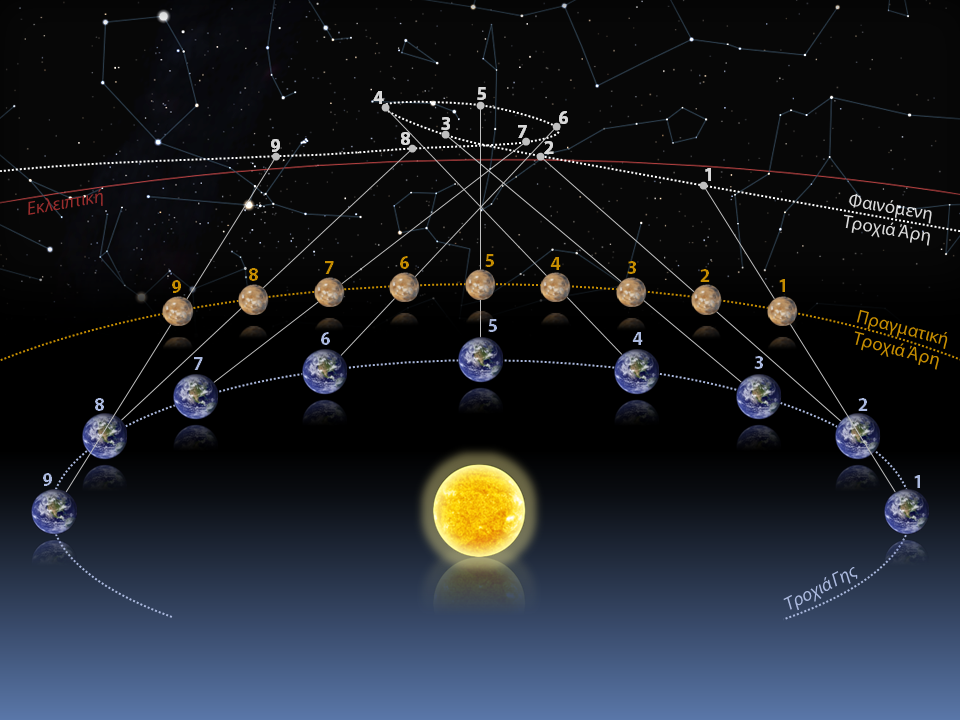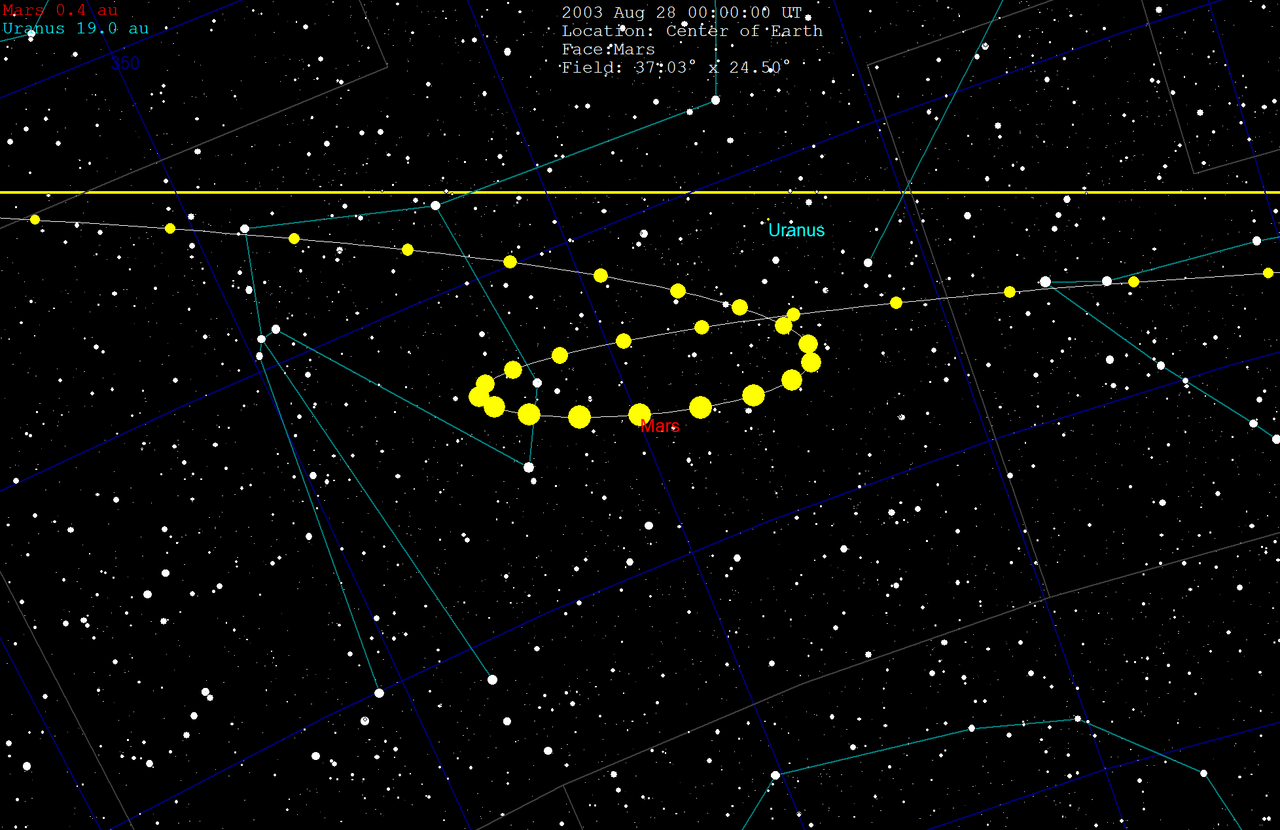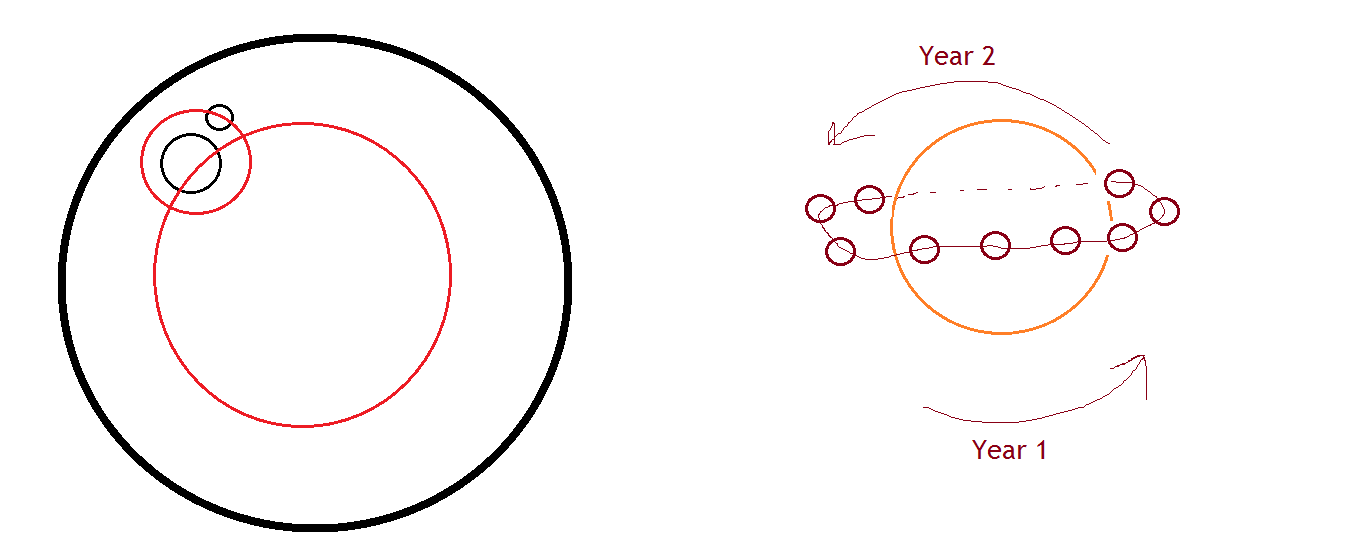
Of all the discussions I've encountered in the stream of flat Earth theory, I assumed that the retrograde motion of Mars would be one topic that flat-earthers would have left alone. My assumption was based on the fact that basic geometry can easily show that Mars' retrograde motion is impossible on the flat Earth model.
Before diving deep on this matter let's pause and explain what the retrograde of Mars is. Mars is easily viewable from Earth in the night sky. However, it's location in the sky is constantly moving. It's movement has been tracked for thousands of years. This is no surprise. What is surprising is that every 2 years Mars' path across the sky creates an ellipse, like it's going around an object. The motion would look like the following path.
 This motion perplexed night time observers for many centuries but the knowledge of the heliocentric solar system can easily explain this strange motion.
This motion perplexed night time observers for many centuries but the knowledge of the heliocentric solar system can easily explain this strange motion.
Mars rotates around the sun at roughly 1/2 the speed of the Earth. So the Earth will "lap" Mars about every 26 months. If the Earth and Mars were track runners and runner E (Earth) was running twice as fast as runner M (Mars), then after one lap of runner E, runner M would be only half way around the track, and therefore on the opposite end of the track. After runner E is crossing the start line for the second time, both runners E & M would be at the same point again, except runner E will have now lapped runner M. To better understand how this looks from Earth's viewpoint, the following video should help.
If pressed on the matter, a flat-earther will attempt an explanation that shows Mars orbiting around the sun, as the sun orbits around the Earth. However, this theoretical motion does not work out. According to the theory, Mars would always be in the same general direction as the sun and would travel in a path that looks more like a continuous loop. It would travel one direction across the sky for a year and then turn and go the other direction for a year.

Despite the obvious path differences in Mars' motion, the observer would also to see Mars because it would only be visible during the daytime. Since the flat Earth model requires Mars to orbit the sun and since we cannot see the sun at night, we can conclude that Mars would also not be visible at not. Yet, Mars is visible in the night sky.
Additionally, according to flat Earth theory, we can't see the sun at night because it's too far away. If true then how can we see a planet that does not have it's own source of light? We can see the light from a planet reflecting the sun but we can't see the sun itself? This makes no sense.
Also, the flat Earth model does not explain if Mars is under the firmament or above it. They will need to agree on a solar model because Mars' path cannot be theorized without a sun location.
Comments